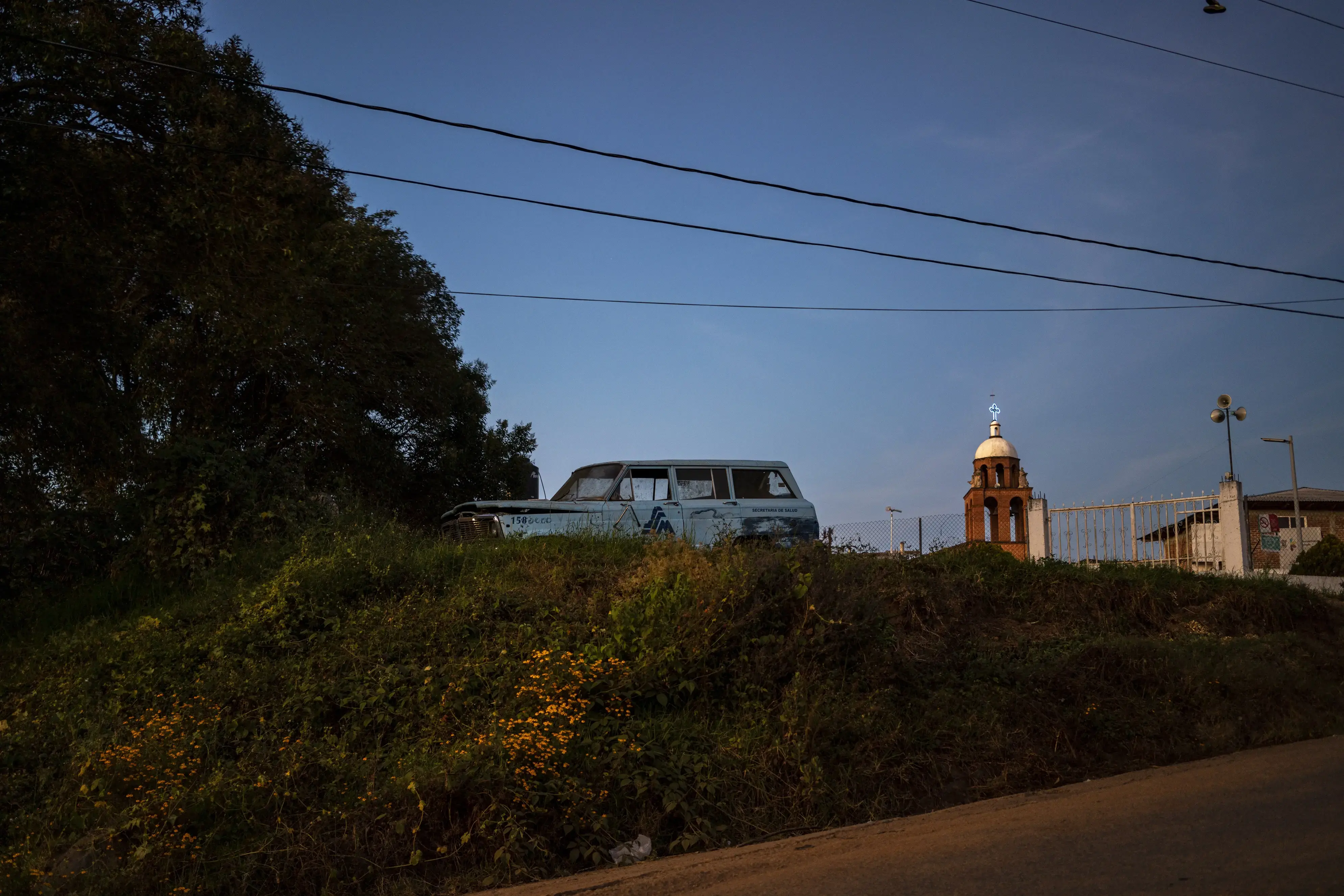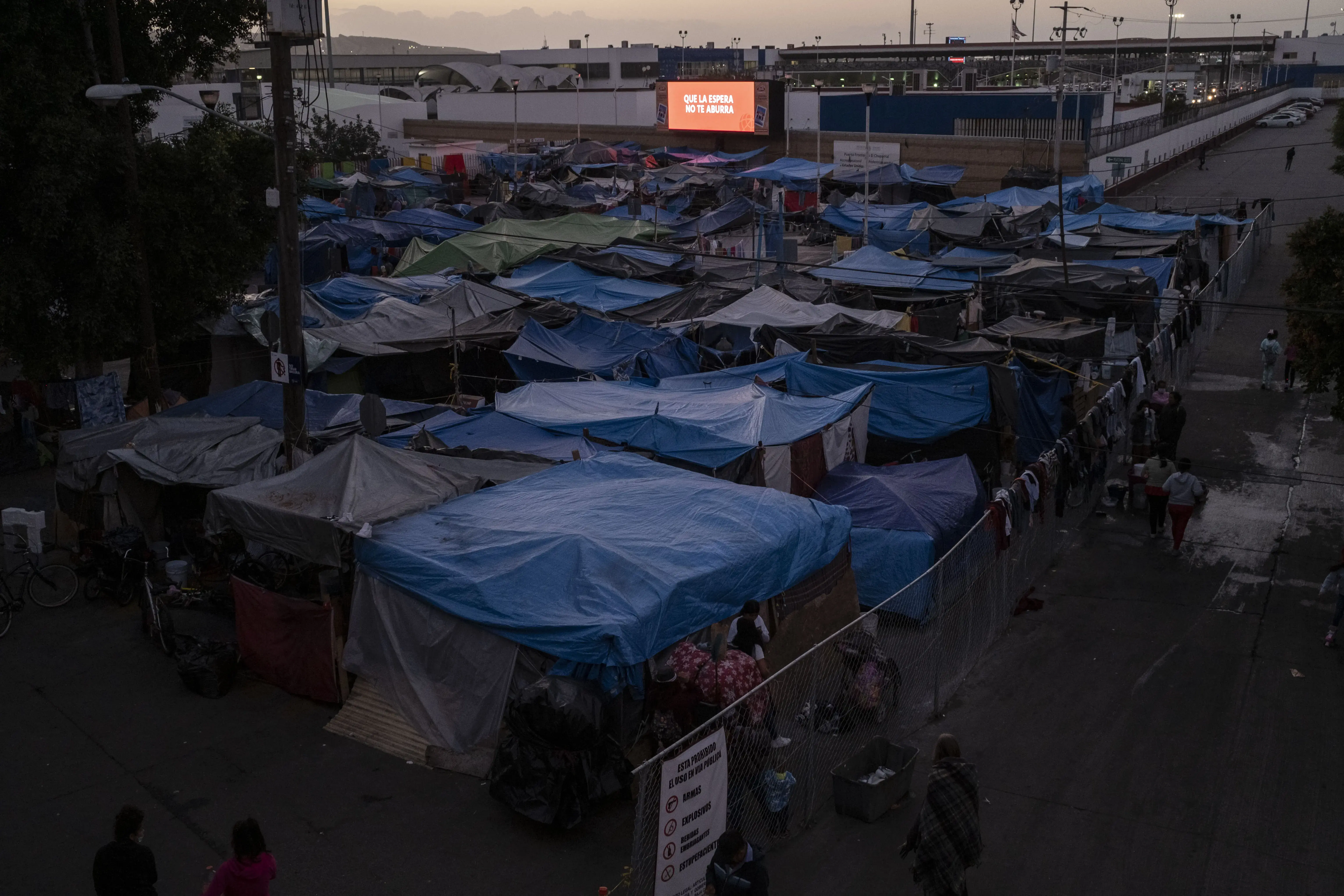
Hectares of avocado trees provided a bonanza for villagers, but in Mexico, money always attracts organized crime’s attention
Linda was forced to leave her home in Ixtaro, Michoacán, Mexico, in February 2021. Hiding under blankets in a van, she took her children and fled the cartel’s threats. Her brother Willie, a retired military officer, had confronted the group that controlled the town, and after a clash with them, he injured some members and killed others. His body showed signs of torture when it was found a few miles away. But these criminal groups do not forgive or forget; one of the men Willie injured was seeking revenge, and Linda knew that if she didn’t escape, she—or her children—would be next.

The Pueblos Unidos [United Towns] criminal organization had taken over the small town of just 1,500 people in an attempt to take control of avocado production. The group was born as a self-defense group, the supposed purpose of which was to defend the villagers from Los Viagras, one of Michoacán’s most bloodthirsty armed groups. The high fees that this cartel imposed began to stifle local producers, who had to pay between 3,000 and 5,000 pesos per hectare (between $150 and $250, at the early 2021 exchange rate).
In less than a year, the United States armed the avocado producers. Business was booming; they themselves sold weapons at exorbitant prices and the people were obliged to buy them. “There had to be at least one gun in every family,” Linda says. Her family was sold a rifle for 100,000 pesos; they had to pool their money together to pay for it.

As a nonprofit journalism organization, we depend on your support to fund more than 170 reporting projects every year on critical global and local issues. Donate any amount today to become a Pulitzer Center Champion and receive exclusive benefits!
Members of Pueblos Unidos arrived in Ixtaro, representing themselves as peasants concerned about the presence of criminal groups. They asked the community to choose a leader or representative to act as an intermediary. But when Los Viagras left town, the new organization took control of laboratories, houses and weapons. It soon became clear that Pueblos Unidos was just another criminal gang.
Avocados had arrived there only a decade before; prior to that, as in many towns, people in Ixtaro cultivated milpas [small fields] or peach trees. The hectares of avocado trees brought a bonanza to the villagers. Their adobe houses gave way to brick houses, the streets were paved and there was generally more cash in circulation.

But in Mexico, money always attracts organized crime’s attention. Extortion and kidnapping became routine in a territory where theJalisco Cartel-New Generation seeks to eliminate all rivals and reign supreme. The towns of Patzcuaro, Santa Clara del Cobre and Uruapan, all of which are in Michoacán, are the scene of disputes between armed groups.
“It has become a much more complex business,” says Brown University professor Ieva Jusyonite, whose book Exit Wounds draws on her years of research on arms trafficking. Drug trafficking requires more planning and risk; owning guns gives organized crime the power to extort and kidnap farmers. “That business is easier,” Jusyonite adds.
Taking the risk of not complying with the cartel’s demands has fatal consequences. A farmer from Ario de Rosales says it has become commonplace to find bodies on his land. “The second body we found, I [told] them the head was already missing,” he says. And the reason they buy the weapons themselves is to not [have to] get involved with Pueblos Unidos. “You want to owe them as little as possible...[it’s] better to save,” he says.

Mexico is currently the world’s largest exporter of avocados. It represents a market worth around US $3 billion, and the state of Michoacán accounts for 75% of that production. The business continues to grow; exports to the United States went from 121,600 metric tons in 2019 to around 135,000 in 2022. Thus, the lucrative business attracted the cartels, which have diversified their activities over the years.
Irene Alvarez, an academic who has researched self-defense groups in different regions of Michoacán, explains that the state is one of the leading branches of organized crime, which is largely due to agribusiness. Indeed, in addition to the enormous production of avocados, they also cultivate different types of berries.
“In Michoacán, there is an agribusiness boom, and that money somehow generates specific dynamics of violence,” says Alvarez. Ixtaro is an example of these dynamics at work. In this region, the practice of making payments to the cartels was established much later than in other regions like Tierra Caliente, which is located between Guerrero and the State of Mexico. The so-called peace that the people bought by acquiring weapons and allowing the entry of Pueblos Unidos ended in disaster. The community’s elected leader and his brothers were murdered for opposing increased avocado planting; they argued that water shortages would end up becoming a problem for all farmers. Linda’s brother Willie died trying to defend them. Willie is now buried in the town’s cemetery, where many have relatives who have become statistics in the war on drugs.
The weapons
Criminal organizations that have members on both sides of the U.S. border coordinate the trafficking of weapons into Mexico. The process begins with the legal purchase and registration of a gun in the United States, which is generally done by frontmen. In almost all cases, those who purchase the guns “are U.S. citizens” who operate in border states like Arizona and Texas, Ieva Jusyonite explains. However, the Bureau of Alcohol, Tobacco, Firearms and Explosives (ATF) has traced weapons in Mexico to all 50 states.

Traffickers wait until they make several purchases so that another person from the same organization can later take the merchandise to a border checkpoint, where a third member is responsible for bringing the weapons into Mexico.
“There is no inspection on the Mexican side,” says Timothy Sloan, the former ATF attaché in Mexico. As a result, the number of weapons seized at the border is very small. Taking advantage of Mexican officials’ lack of controls, these people often hide guns inside car doors, in diesel tanks, or disassemble them to make their identification difficult. “I have records of stories, for example, of one person who passed his gun off as a car seat,” adds Irene Alvarez.
Tijuana’s San Ysidro border crossing is one of the most commonly used to transport weapons; while California’s laws are less lax, traffickers often take guns to this checkpoint because they know it is very busy.

The operation involves a chain of at least five people, and by the time the merchandise arrives in Mexico, its cost has increased three or four times. As with drugs traveling north, the further the weapon moves away from the border, the more its value increases. Sales are made primarily through WhatsApp groups.
That was how one of the weapons used in the crime that led to the March 2023 murder of two U.S. citizens in the border city of Matamoros arrived in Mexico in the first place. Kidnapped by a criminal organization, the Americans were found four days later. The gun was traced back to its purchase by an American man who admitted that he knew the weapon would find its way into the hands of the Gulf Cartel and received $100 for the transaction.

The military regulates the flow of weapons in Mexico, but the lack of transparency contributes to not knowing how many guns there really are in the country. Some estimate that there are 15 million in circulation, 85% of which come from illegal trafficking.
Lisa Sanchez, the executive director of Mexico United Against Crime (MUCD), explains that since 2017 the government has been required to prepare a National Registry of Ammunition Weapons, through the Secretariat of Security and Citizen Protection. “And that registry has either not been done or, if it has been done, it is not public,” she says. Sanchez argues that this creates a void in quantifying the arms market, and there’s a lack of records on weapons diverted to illicit markets. “What happens, for example, with those weapons that are lost or stolen?” the expert asks.

In June, the Mexican Army said that over the course of this six-year presidential administration, it has seized more than 39,000 illegal weapons. Andrés Manuel López Obrador’s government filed a criminal lawsuit against 11 gun shops in Massachusetts; the case was dismissed, but the Mexican president has appealed the decision. The Ministry of Foreign Affairs then filed a civil lawsuit in Arizona, which is pending resolution.
In any case, in addition to the issue of how many guns there are, the type of guns also poses a problem. “In the war [on drugs], there is an arms race,” explains Irene Alvarez. The caliber of weapons circulating within the country worries the authorities, because even the municipal police are often less armed than these groups. “Their ability to do damage is completely over the top now.”
50-caliber Barretts, AR-15s, drones and tactical gear are turning entire regions of Mexico into ghost towns. “Nothing makes you want to flee your home as much as a gun pointed at you,” says Ieva Jusionyte, a professor at Brown University. “The flow of guns and their proliferation in Mexico is definitely associated with forced displacement,” Jusionyte continues. That’s why Linda only had time to gather a change of clothes before she fled her home with her family.

Mexicans on the border
On the border between Mexico and the United States, there are thousands of stories of displaced Mexicans hidden among Venezuelans, Nicaraguans, Haitians, Afghans...In just a few days, a dozen women in Tijuana shared their stories of violence, extortion and kidnapping. “Just as the United States is concerned about deaths from fentanyl overdoses, in Mexico we are concerned about the lives lost to homicides and the firearms that enter the country illegally,” explains Cecilia Farfan, the head of security research programs at the University of California, San Diego.


One woman from Michoacán says that her daughter was shot five times on the street corner by her house six days ago. She didn’t even have time to bury her; she got in a truck with her two children en route to Tijuana. MUCD’s Lisa Sanchez says the statistics show how guns have affected communities. “Seven out of ten violent deaths of women are caused by firearms,” says Sanchez; in 2000, they were only responsible for three out of 10 such deaths.
Another woman from Michoacán tells us about the videos her ex-partner sends her in which he holds a long gun, telling her that he has already identified her. He threatens to dismember her son and then her. A Guanajuato woman was kidnapped for almost a month and had to flee with her sister and two daughters. Another woman from Ixtapa, in Guerrero, filed a complaint after she was unable to make her payments to protect her taquería (taco shop).

The Mexican state of Michoacán has a very close relationship with the United States; not only because of avocados, but also because of a decades-long migratory flow.
In 2022 alone, remittances reached US $5 billion. But migration dynamics are changing. Migrants are no longer just single people in search of a better life but entire families displaced by violence. Linda, for example, traveled with 25 family members. And, in the end, the problem is always guns. “To the extent that you have more people who are armed and have this significant firepower, (...) it allows different groups to use the threat of violence if they want to displace people from an area,” Farfán says.











